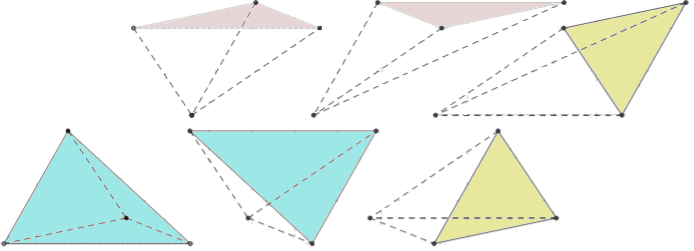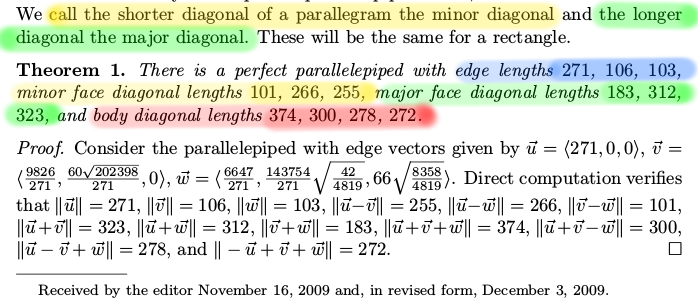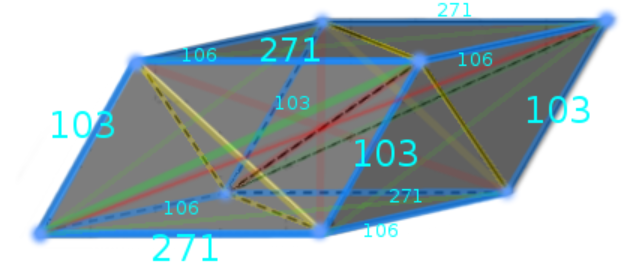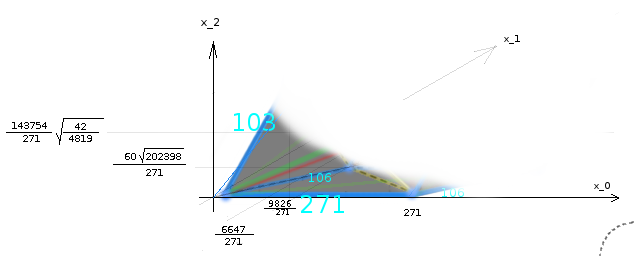On what has been mentioned so far
Many partial answers have been given already. This is another partial answer.
Let us first carefully consider what the OP is actually asking.
The answer to the question in the title is practically-certain to be negative. There does not exist anything worthy of the name 'database' for these 6-tuples. There do exist scattered results. The whole topic seems frustratingly difficult.
The answer to the first question in the body of the OP
Is there a collection of lists of six integer edge lengths that form a tetrahedron?
is positive. An answer of Igor Rivin has identified such a 'collection'. An answer of M. Winter has identified another way to obtain some such 6-tuples. It seems to me that none of these answer, at least not evidently gives the OP what they are requesting with
I need to find approximately thirty such tetrahedral combinations.
unless one assumes that $\approx 10$ is the same as $\approx 30$.
So-far unmentioned, very relevant aspect: perfect parallelepipeds
No one so far has mentioned (though M. Winter did make a step in this direction when they mentioned 'Euler bricks')
- the widely known fact that any parallelepiped in Euclidean three-space can be 'partitioned'(terminology) into six tetrahedra. A pictorial representation of such a 'partition' is
(constructed with Geogebra and GIMP )
For brevity let '$\sigma(x,\mathrm{t})$ $:=$ 'of which there are of course at most two, despite there being $x$ distict $\mathrm{t}$ s'
- the fact that this can be combined with recent discoveries of what is called 'perfect parallelepipeds'(terminological suggestion)='non-cube parallelepipeds such that all three edge-lengths, and all three minor-face-diagonal-lengths, and all three major-face-diagonal-lengths, and all four body diagonal-lengths are positive integers.
The first published specification of such a perfect parallelepiped
and I would like to point out to the OP that
because of the above-mentioned 'partition', results about perfect parallelepipeds are a source of 6-tuples of the kind you are requesting.
For example, the theorem of Sawyer and Reiter reproduced and color-coded above seems to correspond to a perfect parallelepiped of which the following picture is an inadequate(inadequate) representation
It seems that you will be able infinitely-more than the "thirty" 6-tuples you request by
- carefully studying
using the decomposition I mentioned above
making it very clear in whatever you are writing that the notion of 'dissimilar' used in op. cit. suitably translates into a notion of 'dissimilarity' among the tetrahedra my proposal gives you (I did not look into that)
Please note that opening sentence
A rational parallelepiped is determined by three edge vectors $\vec{u}$, $\vec{v}$, $\vec{W}$. [emphasis added]
of the second section of op. cit. would be flat-out wrong (to see this: flatten the skeleton) if the word 'rational' were erased, since the skeleton of a cube is not even a locally-rigid framework, let alone a globally-rigid one(further reading on frameworks)
Finally, facile warnings (I now the well-there-may-equally-well-be-a-bug-in-one's-brain objection):
the verification of whether the parallelepipeds specified by Sokolowsky--VanHooft--Volkert--Reiter actually do have all the properties claimed neither seems to have been done by any human being, nor seems to be doable in reasonable time by a human being,
said verification seems to have been delegated to Mathematica,
only few people seem to be allowed to look under the hood of the marvellous machine that it Mathematica,
even if one is allowed to look under hoods of large machines, it is very very difficult to be sure whether they work as expected
so in the unlikely case that you are thinking about using these 6-tuples for some critical application, you should think twice.
To summarize,
this answer suggests to the OP to make use of the fact that currently more thought and energy is going into finding someting stronger than what they are asking for (namely: stepparallelepipeds),
this answer suggests that the OP could usefully try to contact the authors of op. cit. about their problem,
I do not know 'how complete' the method is that I am proposing here (i.e.: to procure the integer-edge-length-tetrahedra from steppable parallelepipeds), i.e., whether any integer-edge-lenght tetrahedron can be so obtained, but I strongly doubt it and expect it to be trivial to show that not all can be so obtained, but will have to leave the subject now.
(further reading on frameworks) The most recent publication on the topic of rigid frameworks, at least spiritually relevant to the OP, is: Jessica Sidman, Audrey St. John: The Rigidity of Frameworks: Theory and Applications Notices of the AMS, October 2017
(inadequate) I accidentally made this with a tool unsuitable for making the local corrections which would be needed to give a to-scale rendition of the example in op. cit.
I don't know whether I will get round to give this another go.
I here reproduce an ill-fated attempt at giving all the data, which, again, is inadequate:
(terminology) Needless to say, saying 'partitioned' here is not quite rigorous, since there are issues about sets of Lebesque-measure zero, which are of course irrelevant to this context. Of course, the OP did not even mention whether their 'tetrahedra' are open or closed point-sets. I will gloss over this.
(terminological suggestion) Personally I find the term 'perfect parallelepiped' very unfortunate and unimaginative. In particular, it seems to have nothing to do with 'perfect numbers'. My suggestion would be to rename this class of parallelepipeds 'steppable parallelepipeds', maybe even portmanteaued to 'stepparellipiped'. These would make for more neutral and more informative art terms, for obvious reasons: all relevant lengths (i.e. the blue, the yellow, the green, and the red ones in the above picture) of stepparellepipeds can be constructed by a machine which is only allowed (0) arbitrary rotations in space (while staying put), and (1) unit-length steps.




